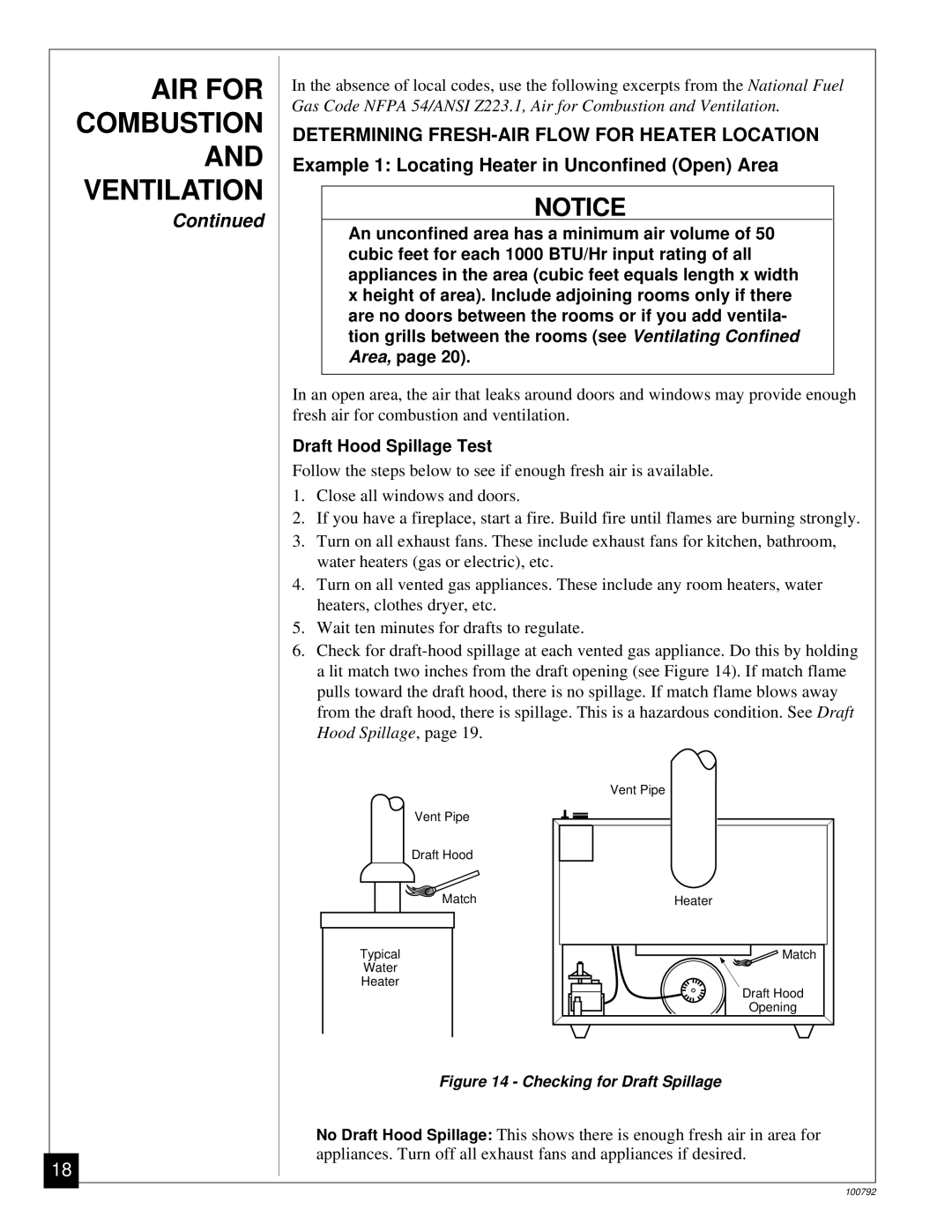
AIR FOR COMBUSTION AND VENTILATION
Continued
In the absence of local codes, use the following excerpts from the National Fuel
Gas Code NFPA 54/ANSI Z223.1, Air for Combustion and Ventilation.
DETERMINING FRESH-AIR FLOW FOR HEATER LOCATION
Example 1: Locating Heater in Unconfined (Open) Area
NOTICE
An unconfined area has a minimum air volume of 50 cubic feet for each 1000 BTU/Hr input rating of all appliances in the area (cubic feet equals length x width x height of area). Include adjoining rooms only if there are no doors between the rooms or if you add ventila- tion grills between the rooms (see Ventilating Confined Area, page 20).
In an open area, the air that leaks around doors and windows may provide enough fresh air for combustion and ventilation.
Draft Hood Spillage Test
Follow the steps below to see if enough fresh air is available.
1.Close all windows and doors.
2.If you have a fireplace, start a fire. Build fire until flames are burning strongly.
3.Turn on all exhaust fans. These include exhaust fans for kitchen, bathroom, water heaters (gas or electric), etc.
4.Turn on all vented gas appliances. These include any room heaters, water heaters, clothes dryer, etc.
5.Wait ten minutes for drafts to regulate.
6.Check for
Vent Pipe
Draft Hood
Match
Typical
Water
Heater
Vent Pipe
Heater |
Match |
Draft Hood |
Opening |
18
Figure 14 - Checking for Draft Spillage
No Draft Hood Spillage: This shows there is enough fresh air in area for appliances. Turn off all exhaust fans and appliances if desired.
100792
